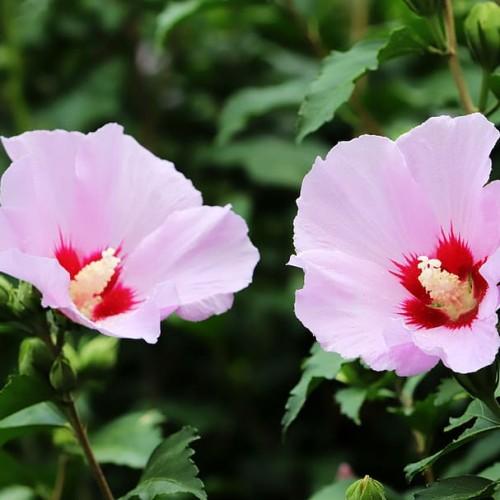
rose of Sharon
Hibiscus syriacus 'Mineru' FIRST EDITIONS TAHITI
Cycle:
Perennial
Watering:
Average
Hardiness Zone:
5 - 8
Flowers:
Flowers
Sun:
full sun
Leaf:
Yes
Growth Rate:
Low
Maintenance:
Low
Salt Tolerant:
Yes
Tropical:
Yes
Care Level:
Medium
watering
Rose of Sharon is a hardy plant species that thrives with regular watering. As a rule of thumb, water your Rose of Sharon once a week. This may increase to more frequent watering during periods of extreme heat and drought. In the winter, when the temperatures are cooler, you can water your Rose of Sharon up to twice a week. Your soil should remain moist throughout the growing season.
sunlight
Rose of Sharon (Hibiscus syriacus 'Mineru' FIRST EDITIONS TAHITI) plants should receive a minimum of 8 to 10 hours of direct sunlight each day for optimal health, and this should extend into the afternoon for at least part of the day. Plants can cope with less light, but this will affect their flowering potential and likely limit it to 1 or 2 blooms and a shorter flowering period. The best placement for your Rose of Sharon is on the south side of the house, surrounded by paving or other reflective surfaces, as this will amplify the amount of sunlight and ensure there is plenty of direct light available.
pruning
Rose of Sharon plants should be pruned in late winter or early spring shortly before new growth begins. Pruning should be done in such a way to encourage new growth and the production of flowers. The plant should be pruned to a size that works with the space and need of the garden. If the bush is too overgrown, it can be broken down into multiple pieces and re-shaped, leaving the centre of the shrub alone, removing some of the older wood, and ensuring a beautiful overall shape. For more specific directions on pruning, it is best to refer to the nursery's instructions for the particular variety.
